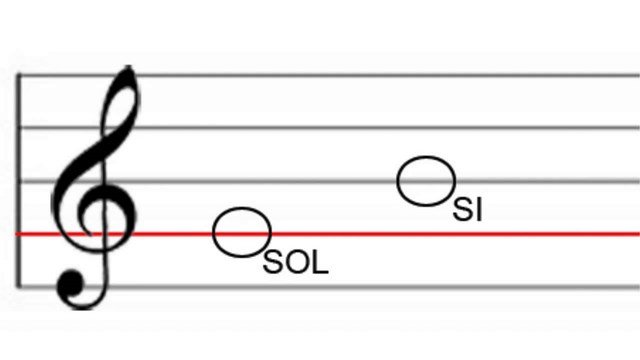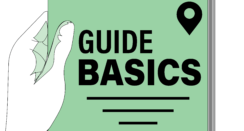Without a doubt, one of the best-known instruments in popular culture is the piano, since millions of songs have been played with this instrument and it is undoubtedly mythical. However, one must learn to read piano sheet music before learning to play it.

The world of music and sheet music is a complex world, since it is not at all like other sectors, such as writing. Let’s say the musicians use their own language, a language that is written in a score and in which we must put the notes that we are going to play.
The bad thing about this is that if we do not have basic knowledge in music, we will not be able to read these scores. If we ever want to play the piano or some sheet music instrument, we are going to have to learn to read sheet music, whether it is for the piano or not.
These scores have some elements such as the staff, the notes, the clef and the sharps, which if we see them with the naked eye will sound Chinese to us. However, if this system is really analyzed in the correct way, it is studied in a convenient way and, above all, one has patience, it will be possible to decipher it in a much easier way than it seems.
If you learn to do it, you will be able to play music on the piano in a very easy way and like never before. For this reason, we are going to teach you step by step to read and interpret piano scores, so that in this way, you can learn to play mythical pieces or pass that piano exam that worries you so much.
Instructions for reading piano sheet music
- The staff: The first thing we should know when reading piano scores is the staff, which is like the canvas where the musician is going to write the notes. The staff is more complex than it seems, since it has a key structure that you must know and nothing else. Also, there are other things like the clef, sharps, and time signature, which are key to understanding how notes are read. We are going to explain everything you need to know about the staff, so that in this way, you can learn to play music on a piano in the correct way.
- Structure: First of all, we must know the structure of the pentagram, which is a structure in lines. The staves have 5 lines , with their respective 4 spaces within this line. The notes will go on each line or space and as it goes up or down, it will be a different note. Also, some additional lines can be created above or below as needed, although the original staff has only those.
- The key: The key, as its name indicates, is what makes the difference and is key to understanding the score. The clef is a symbol that is placed in front of the score and marks the structure that the score will follow. For example, there is the treble clef, which is the best known. This key will tell you the way in which the notes are placed and thus you will be able to read the score better and be able to compose calmly.
- Sharps: Sharps are a special type of note, which is a note that is held longer than normal. The sharps are placed on a kind of pad, right next to the key. If you manage to put the sharps in the correct way, you will make the score more interpretable, so be careful how you put them, since otherwise you could ruin the whole piece, something that of course we do not want to happen.
- The compass: Finally we have the compass, which is also key when it comes to understanding the staff and being able to play. The compass is the rhythm of the song and the beats it gives when repeating. It is marked with a kind of fraction next to the sharps or the key and it is the one that indicates how the song should be played and what rhythm. If you look, in all the songs, there is a beat that is repeated in the rhythm of the instrumentals, this is the beat. It can be 2/4, 3/4 and 4/4 and each one marks the blows that must be given. Understanding the bars makes the difference between a good musician and one that is not.
- The notes: Now we are going to know the musical notes, which are the most important part of a score. The musical notes are placed on the staff and with the help of the clef, we will know what it is and how it should be played. For example, in a treble clef, the sun is placed on the treble clef line and from there you can tell the rest. However, there is more than just the pitch of the note, as there is the duration of the note. This is marked with the type of note, in which there are different types that must be known.
- Whole: This is the largest note of all and lasts for a whole measure. The round one, as its own name indicates, is placed on the pentagram as a circle, without any type of tail, and it is the one that lasts the longest of all.
- White notes: The white note is the second longest of all and lasts half a measure. The white one is round with a kind of stick attached to it, something that distinguishes it from the latter.
- Quarter notes : Black notes mark a quarter bar and are the same as half notes, but with the background of the circle completely black.
- Eighth notes: These notes last one eighth of a measure and are the same as quarter notes, but with a tail that sticks out to the side. In addition, eighth notes can go together, something that forms a kind of headphone symbol that we all know.
- Less than eighth notes: There are smaller notes, such as sixteenth notes or 33rd notes, halving the measure of each one. These are marked by adding a secondary tail to the eighth note, adding a tail for each division of the eighth note.
- The rests: Finally we have the rests, which mark a time in which we don’t have to play anything. The rest of a compass is an upside down hat, the rest of a half note is a hat, the rest of a quarter is a strange symbol, like an e upside down, the eighth rest is a kind of flower and the others are flowers with more tails (as with sixteenth notes).
- Know your piano and play the piece: Now that you know how to interpret the staff, you can play the piano, however, before you have one more thing to do. The piano is a complex instrument that must be known, so you must know the layout of the keys and the use of the pedals well if you want to play the piano correctly, because if you do not do that, you will not be able to play it, no matter how much you know a sheet music. However, this way of interpreting a score is also valid for playing other easier instruments, such as the flute.
